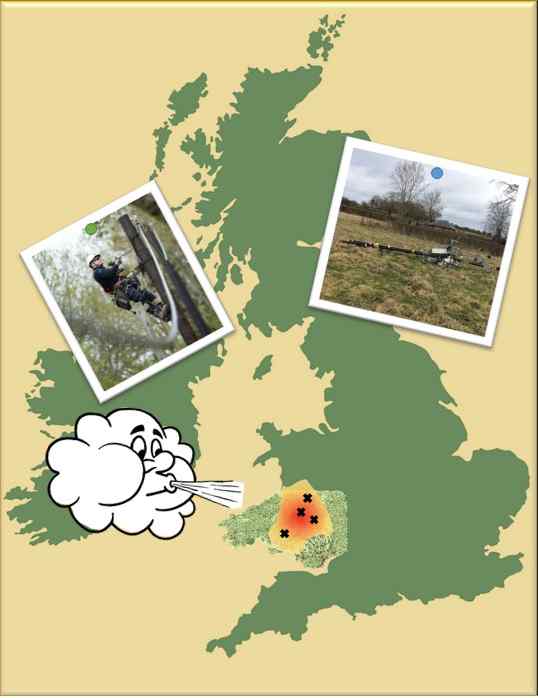Images of climate innovation
How to predict future storm damage
Consequence forecasting is a new way of predicting the impacts and consequences of weather and climate hazard. It works by taking damages caused in past storms and associating these with the local intensity of the weather event that caused the damage. Once these relationships are obtained, they can be used to make predictions of future damage and the associated consequences using either weather forecasts or climate model output.

Many climate projections suggest that future storms are likely to get more frequent and more damaging: but what damage will we experience and how should we manage the risk. To help with this situation, we have developed a tool for forecasting windstorm damage and power cuts to electricity networks.
We call this tool Consequence Forecasting and believe it is a unique and powerful climate adaptation tool for managing the impacts of present and future climate extremes. Our tool works by overlaying reanalysis data (proxy-observations) onto a GIS of electricity infrastructure, giving us a good estimate of wind speeds at infrastructure locations. We then take a database of electricity faults (where, when, and what caused the fault) and match those with our reanalysis wind speeds, to obtain a relationship between wind speed and the likelihood this causes damage.
To make predictions, weather forecasts are used to calculate expected wind speed at the locations of electricity infrastructure and then translated into predictions of damage using our damage relationships. Knowing damage, we can use data from previous storms to estimate the resulting power cuts. The tool can also use climate model output to make assessments of how damage and power cuts may change in the future.
We have demonstrated proof of concept for the tool and hope to turn it into a UK wide, early-warning system, where Met-Office forecasts feed directly into the consequence forecasting tool and the electricity networks owners are informed where power-cuts are likely to occur, how many people may be affected and how many power lines are likely to be needing repair. We are also starting to use the tool to make predictions of how damage and power cuts may change in the future and what reinforcement strategies will be necessary to adapt to these changes.
This is a clever way of quantifying future weather-related impacts because the climate model outputs are already compatible with the consequence forecasting tool and the tool provides probabilistic information so users can prepare for different scenarios and have an idea of the likelihood of each scenario. The really exciting thing is, with a little bit of modification, the tool could be adapted to work for any weather hazard (e.g. flooding) and for any infrastructure (e.g. transport networks) and so we could have an early warning system for all the UK's infrastructure networks.
Entrant: Sean Wilkinson , Newcastle University
Copyright: Sean Wilkinson